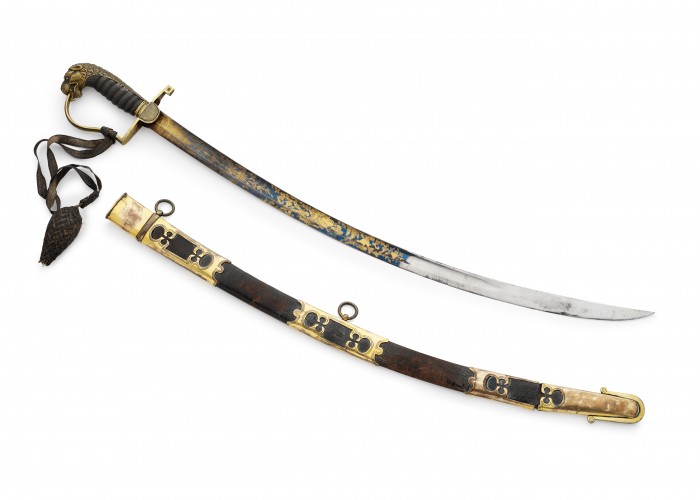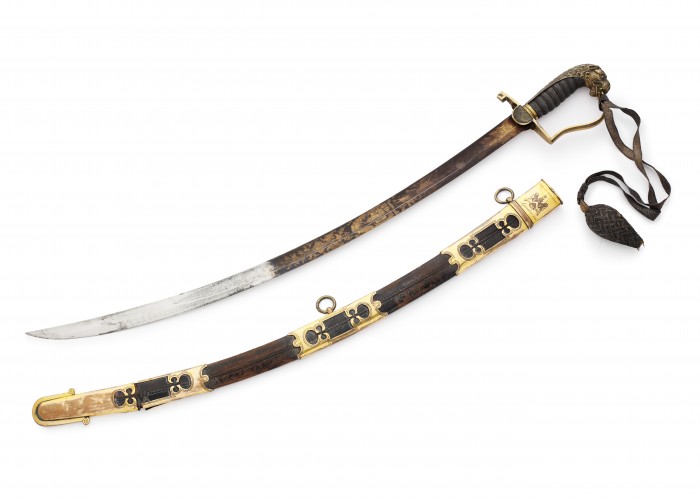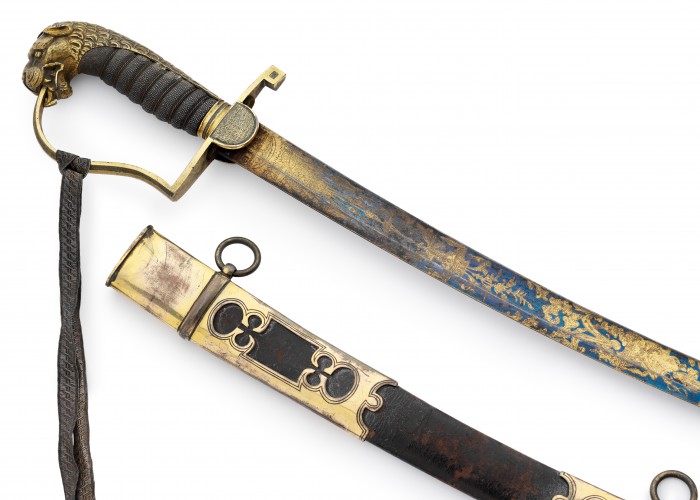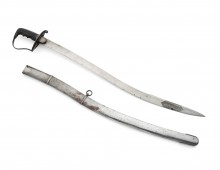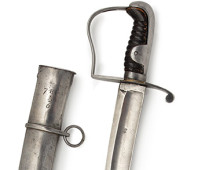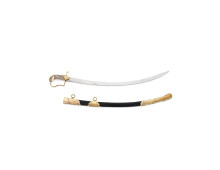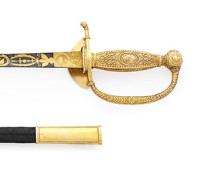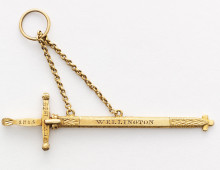Sir William Ponsonby’s Sword
This is the sword of Major-General Sir William Ponsonby, commander of the Union Brigade at the Battle of Waterloo. Ponsonby was killed by lancers after a cavalry charge left his horse mired in mud, close to the French lines.
Sir William Ponsonby (c1772-1815) commanded the Second Heavy Cavalry Brigade at Waterloo. The Brigade is immortalised as the Union Brigade as it comprised regiments from England (The “Royals” or 1st Dragoons) Ireland (The “Inniskillings” or 6th Dragoons) and Scotland (The “Scots Greys” or 2nd Royal North British Dragoons).
Only the Royals had seen active military service in the Peninsula, the other two regiments had not seen active military service for 20 years before Waterloo. In the space of 30 minutes the Union Brigade mustering approximately 1,000 sabres destroyed what Napoleon had designed to be his battle winning move of smashing through the weakened Allied left by using 14,500 fresh infantry with cavalry and artillery support against 6,500 battle weary Allied troops.
It is reckoned that the Union Brigade rendered a third of the French attack hors de combat (killed, wounded, prisoners) and of course captured two eagles. Sir William coordinated the Union Brigade’s attack and led it first deploying the Royals, then the Inniskillings and finally the Scots Greys. In doing so he moved diagonally left across the battlefield.
When the Scots Greys’ Lieutenant Colonel took a small body of Scots Greys on a reckless charge to attack the French artillery Sir William took charge of the remainder of the Scots Greys to attack the retreating French troops of General Durutte which included light cavalry (chasseurs). It was while trying to break through the French cavalry and lead the Scots Greys to safety that the British cavalry were attacked in the rear by the 4th French lancers commanded by Colonel Bro.
Sir William was captured and made a prisoner by marechal de logis Francois Orban of the 4th lancers. When some of the Scots Greys attempted to rescue him Orban killed Sir William and took his sword. Sir William’s body was found the next day stripped except for his shirt which was soaked with his blood from the lance thrust. The body was brought back to England and buried in St Mary’s Kensington.
Orban retired from the French army after Waterloo and worked on his parent’s farm which he inherited. He displayed the sword on the chimney breast above the open fire hence the blued and gold decoration and the sword knot not being their original colour. Orban had no children and when he died his relations sold his mementos including the sword which passed through various collectors until it came into the collection of a former French Cuirassier officer, T Barbet de Vaux, who had fought alongside the British during the Boxer Rebellion.
After the end of the First World War Barbet de Vaux showed the sword to Field Marshal Lord Haig and his ADC Major Astor who communicated its existence to Major General Sir John Ponsonby 1st Battalion Coldstream Guards. After a complex set of negotiations Barbet de Vaux presented it to Sir John in 1928
The sword is a very interesting composite piece. It has the typical English P or stirrup hilt and lions head pommel. The Lion’s head pommel appeared on British and French swords of this period but only British swords had the lion’s head pommel with the P stirrup hilt – French light cavalry swords preferred the D stirrup hilt. It is the blade that is most interesting. British, French and Spanish light cavalry regiments had curved blades and this is a Spanish blade.
If you look very closely on the decorated part of the blade you will see “Long Live the Emperor” in Spanish (Viva Emperador) which is ironic to say the least! Sir William was Lieutenant Colonel of the 5th Dragoon Guards and he led the regiment when it was in the Peninsular from 1811 to its return to England in 1814. Originally it formed part of Le Marchant’s cavalry brigade and Sir William led the regiment in the great cavalry charge at the Battle of Salamanca in which Le Marchant was killed.
Wellington immediately promoted Sir William to command the brigade as well as joining the general staff. The British army entered Madrid in August 1812, Sir William and his brigade actually escorting Wellington into the capital. At the end of August Wellington took some of his troops to pursue a French army northwards; an advance which would lead to failure to capture the castle of Burgos in Northern Spain and a disastrous retreat back to Portugal. Wellington took Sir William’s brigade with him.
The scabbard of the sword has the Ponsonby arms and with it an intriguing date of September 1812. This is the last date at which Sir William would be in Madrid or the first day he would have rejoined his brigade for the advance on Burgos. We know from the work of Juan Jose Perez that the British army were arming the Spanish army by attaching new hits that had been shipped from England to old Spanish blades.
Napoleon’s brother King Joseph of Spain had regiments of Spanish troops who were sympathetic to the French cause and there were of course Spanish civilians who supported Napoleon as well. I wonder if the blade was originally made for one of these and with the flight of the French from Madrid on Wellington’s approach the blade remained in the Royal Armoury or a sword maker’s in Madrid.
It was then attached to the English hilt and either bought by Sir William himself or presented to him by the officers in the brigade when he rejoined them in September 1812. Given his straightened financial circumstances it might have been his only opportunity to acquire a world famous Toledo blade.
-
Curatorial info
- Originating Museum: Private Collection
-
Use this image
You can download and use the high resolution image for use in a non-profit environment such as a school or college, but please take note of the license type and rights holder information below
- License Type: Creative Commons
- Related Objects


